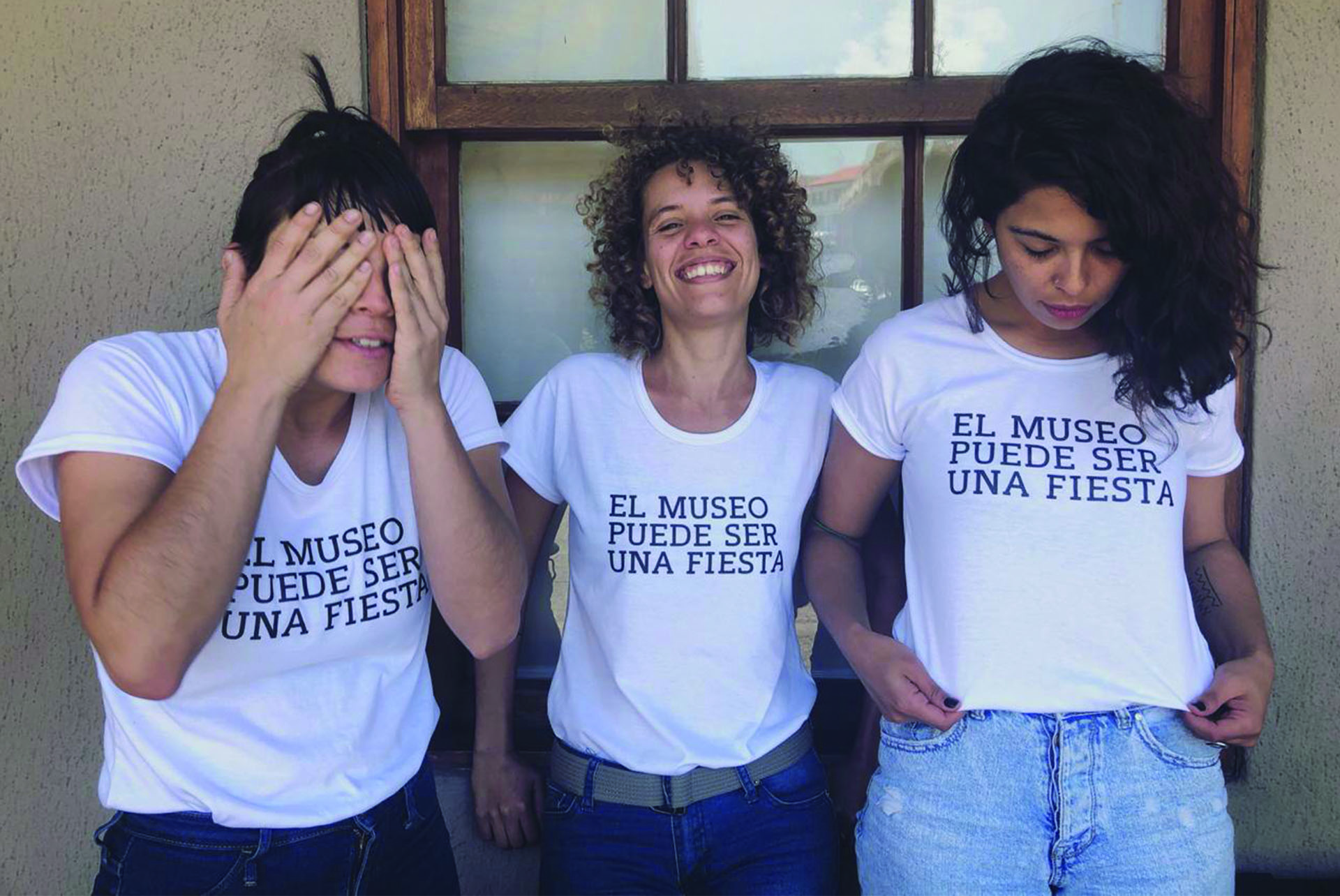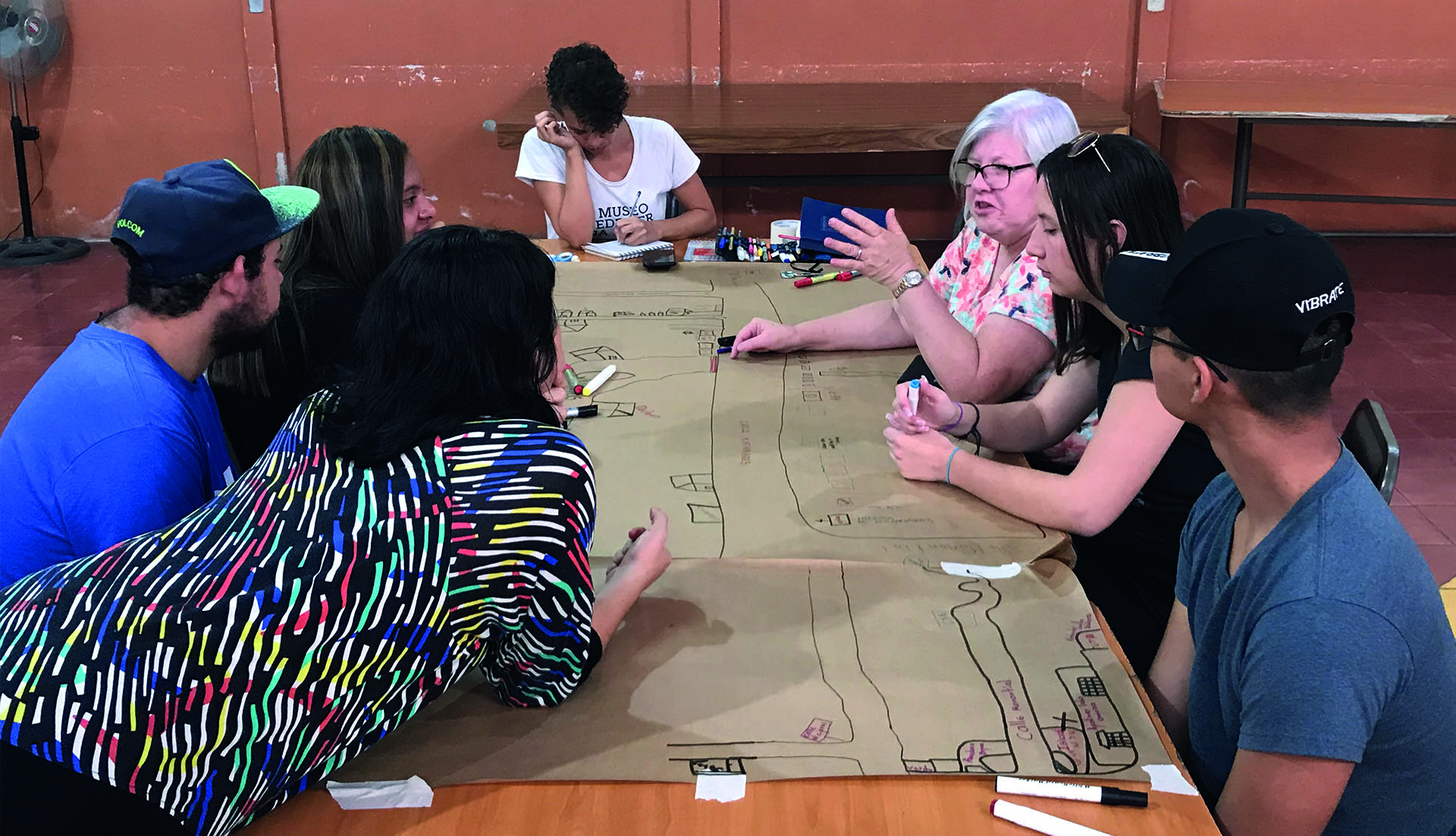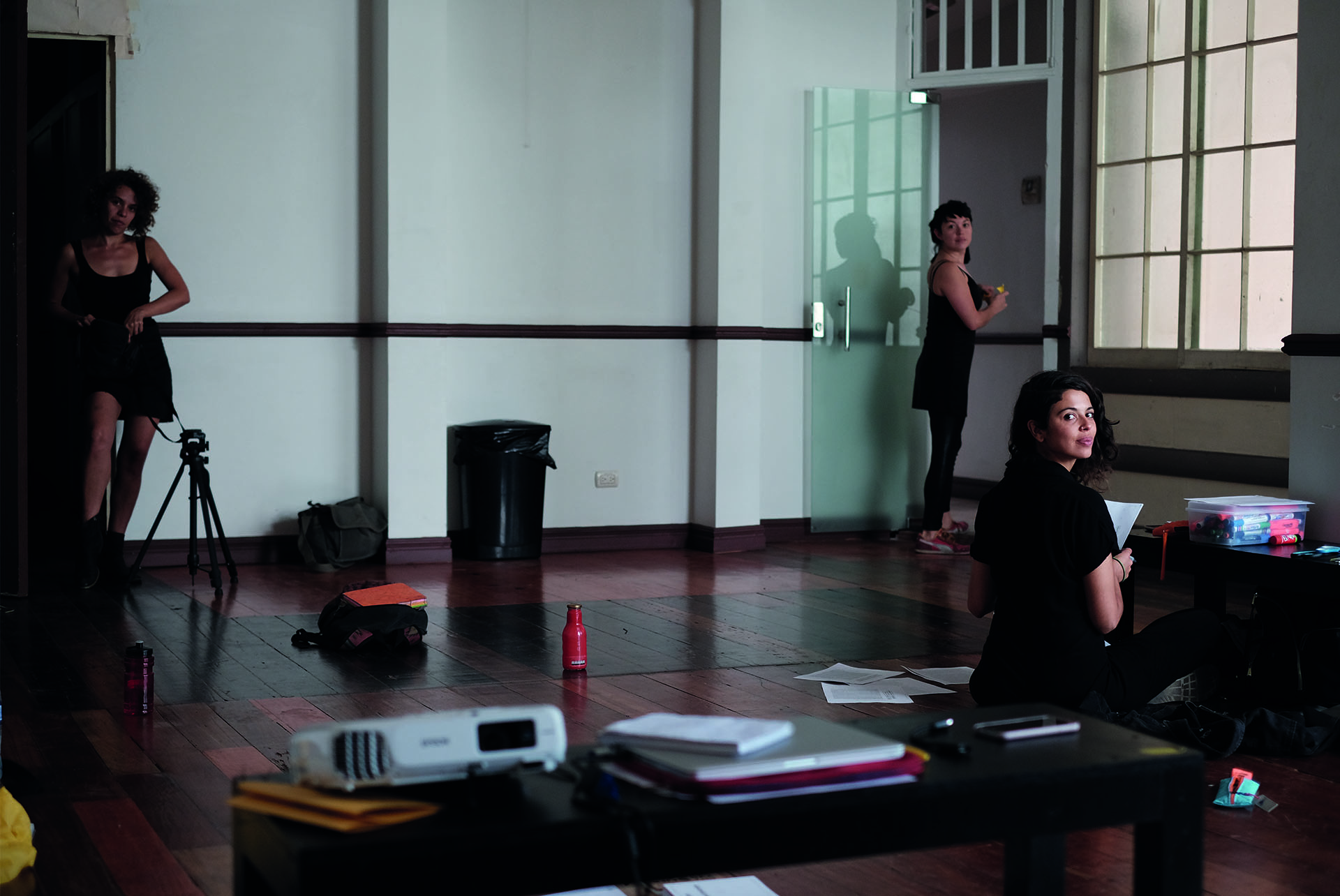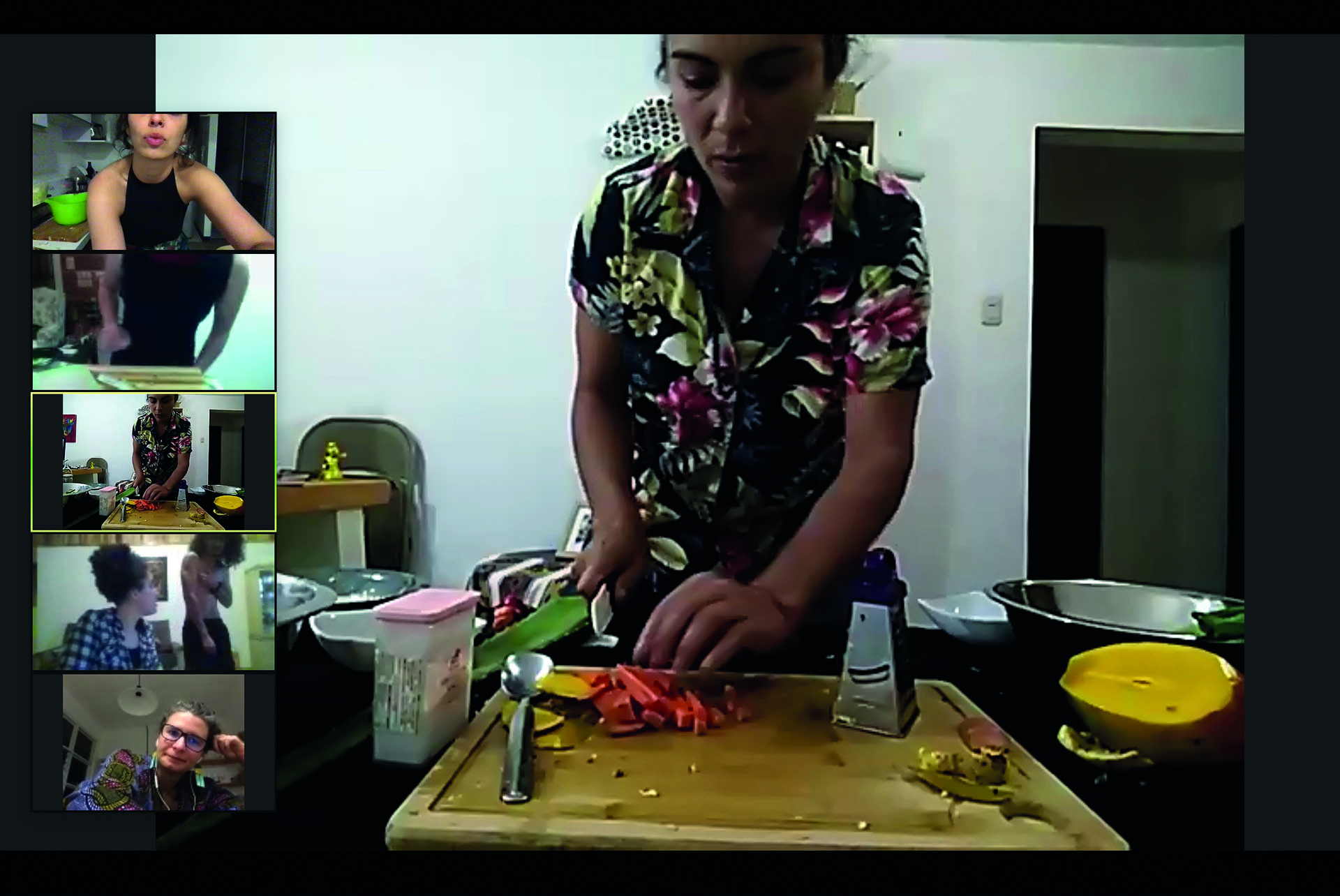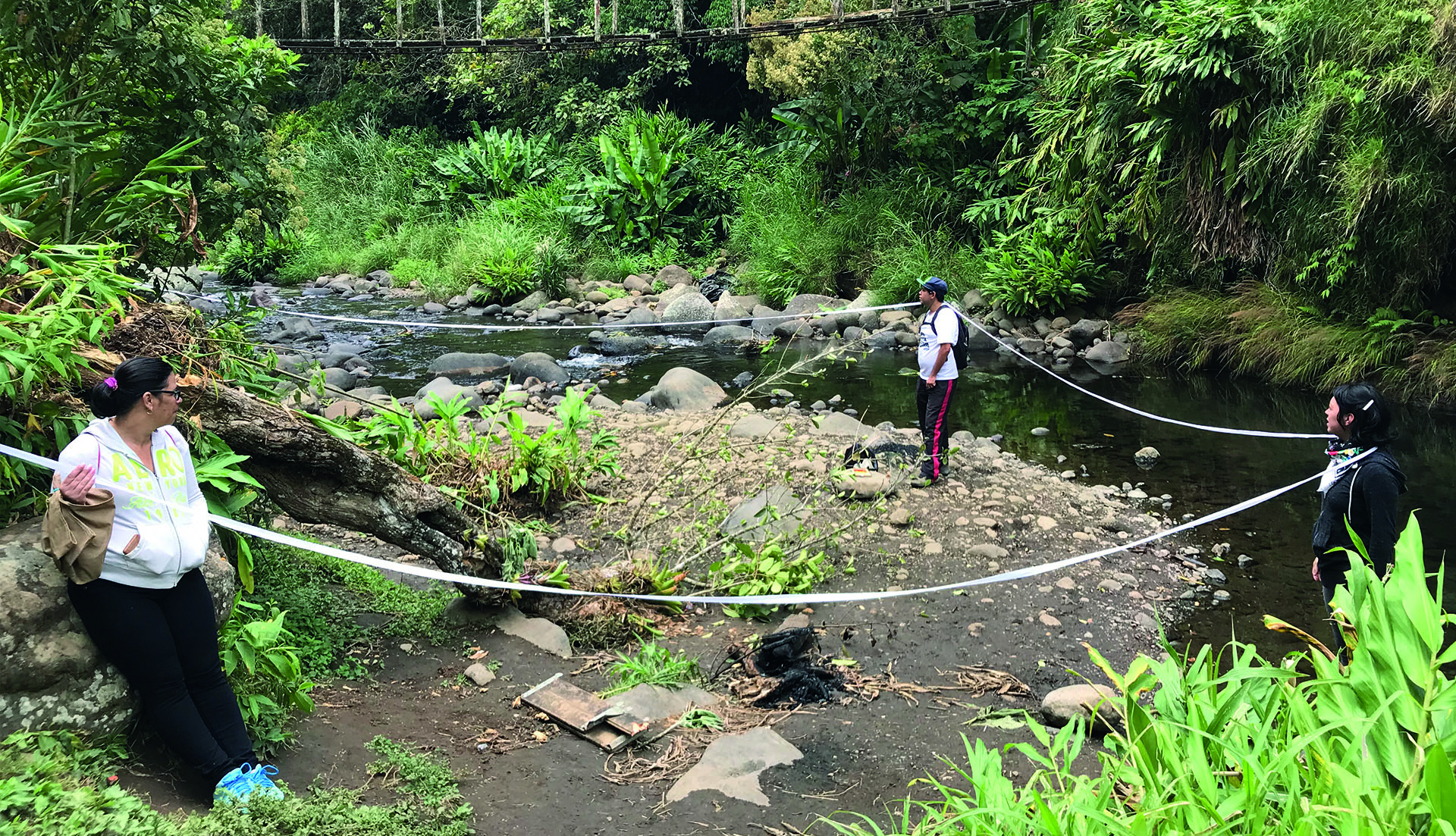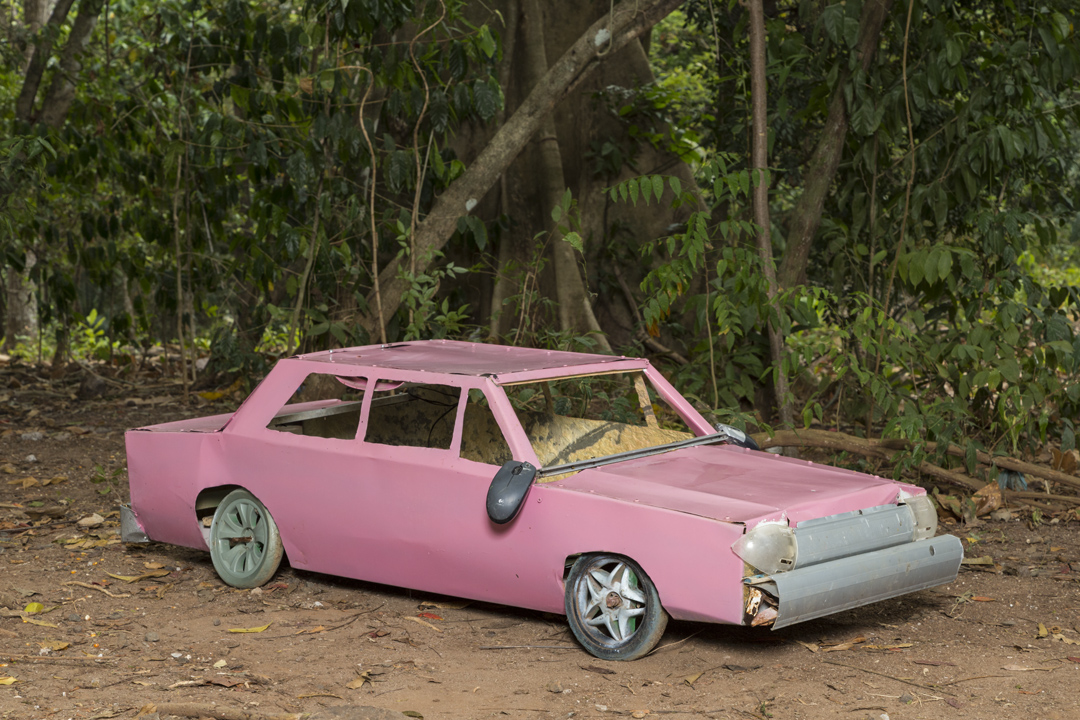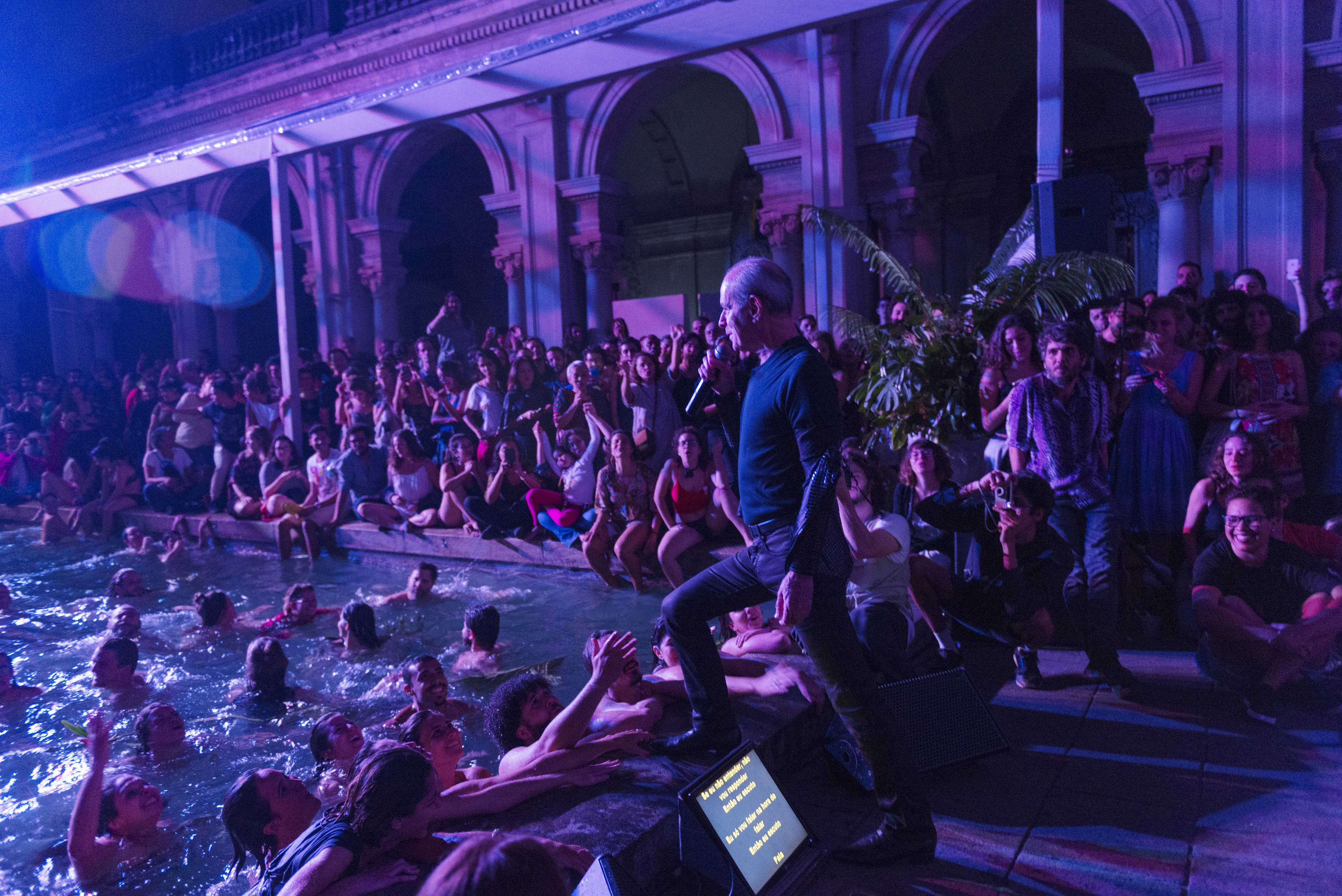We —Catalina, Mariela and Marga— came together to work on art, education and management in 2018, after meeting at a workshop on artistic mediation tools given by Carmen Oviedo, from Pedagogías Invisibles [‘Invisible Pedagogies’]. We were inspired by a shared intuition about how this practice of art conceived of as epistemology corresponded to the way in which we already approached some aspects of our individual practices. It was a very organic coming together that eventually led us to think of joint projects, stemming from what we called at the time art-education.
We were inspired by the freedom and openness that we found in this hybrid practice. Over time, we have understood that we are also united by the need to collectively construct approaches that are less formal and institutional, and more collective. Creating a network among ourselves was a first step towards thinking about building networks with other people who do the same in Costa Rica, our country, and also within the region.
We have found many strengths in hybridization and interdisciplinarity. The three of us do things from different places, we work with a different logic, but we have shared interests, desires, micropolitics, positions and work ethics. When all that closeness and divergence comes together, beautiful and powerful things happen.
